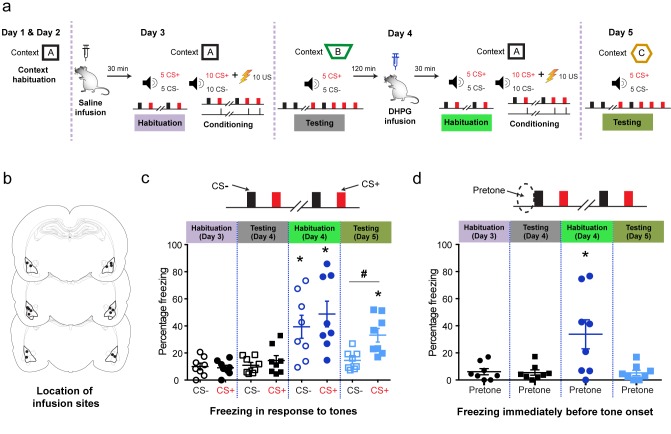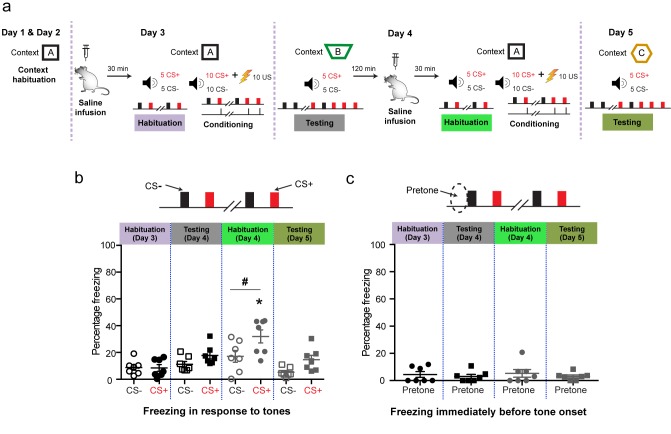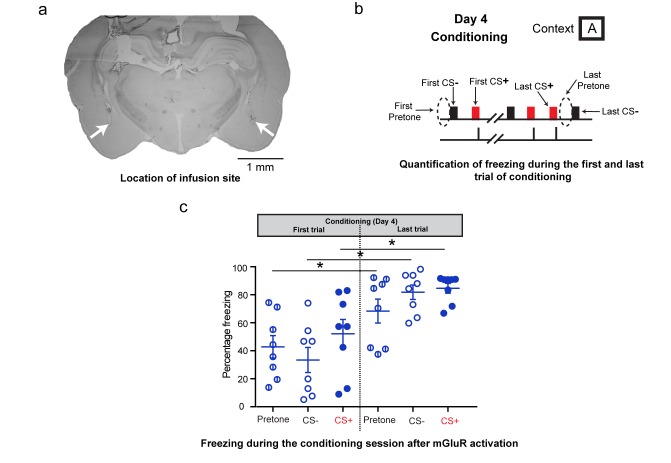Figure 2. Targeted in vivo activation of mGluR5 in the BLA by itself initially causes indiscriminate fear, but it eventually leads to selective strengthening of cue-specific fear when combined with conditioning.
(a) Experimental protocol for discriminative auditory fear conditioning (10 CS+-US pairings were interleaved with 10 CS− presentations during conditioning) using a weak US (0.4 mA) combined with in vivo infusion (1.0 μl per side) of saline (0.9% NaCl) followed by DHPG (50 µM of DHPG) into the BLA of the same animal. (b) Schematic coronal sections depicting cannula infusion sites for saline/DHPG. (c) Mean freezing levels 30 min after saline infusions on Day 3 showed no difference between the CS+ and CS− during habituation (N = 8 rats, p>0.05). During testing 1 d after weak conditioning (Day 4), the CS+ did not evoke higher freezing relative to either the CS− (p>0.05), or habituation (p>0.05). However, 30 min after DHPG infusion, the same animals exhibited significantly higher freezing to both CS+ and CS− (*p<0.05), and the freezing levels were indistinguishable between CS+ and CS− (Habituation, Day 4: p>0.05). Strikingly, subsequent conditioning in the presence of DHPG using the same weak US (Day 4, 0.4 mA) strengthened cue-specific fear. Thus, during testing 1 d after weak conditioning, the CS+ evoked higher freezing relative to the CS− (Testing, Day 5: #, p<0.05), as well as CS+-evoked freezing 1 d after weak conditioning in saline (Testing, Day 4: *, p<0.05). (d) Mean freezing levels in the different spatial contexts immediately before the presentation of tones (pretone) during the same tests described in (c). Enhanced pretone freezing in the context was observed only immediately after DHPG infusion (Habituation, Day 4: *p<0.05). *p<0.05 between sessions in all graphs; #p<0.05 between CS+ and CS− within sessions in all graphs.
DOI: http://dx.doi.org/10.7554/eLife.25665.004



